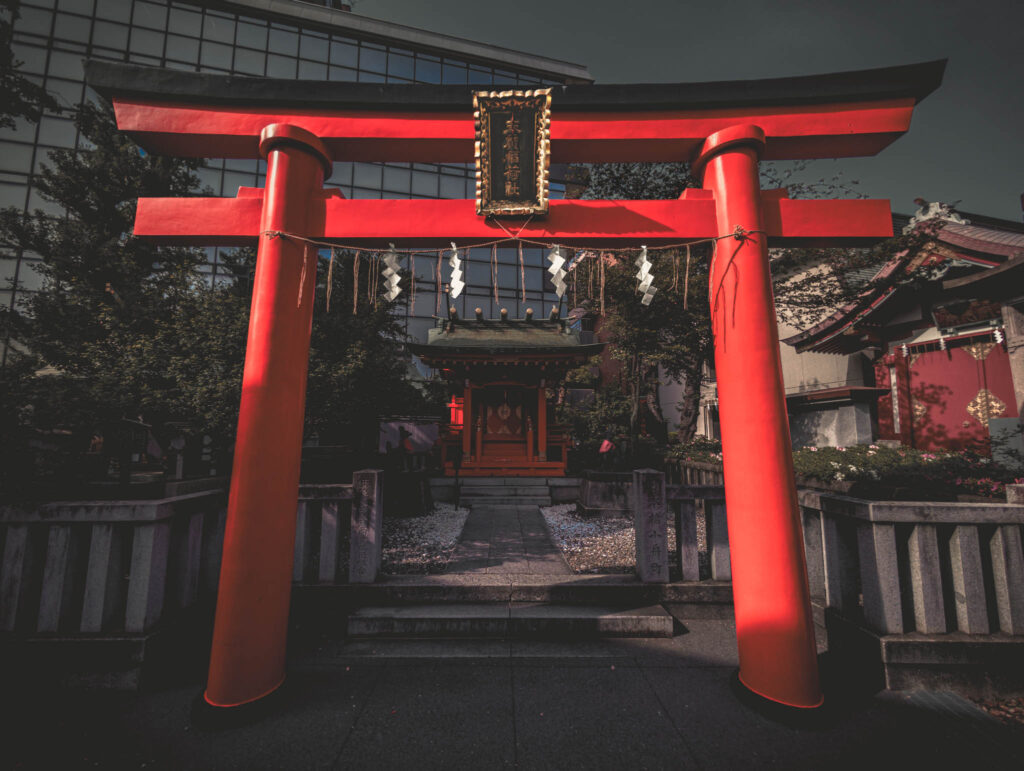
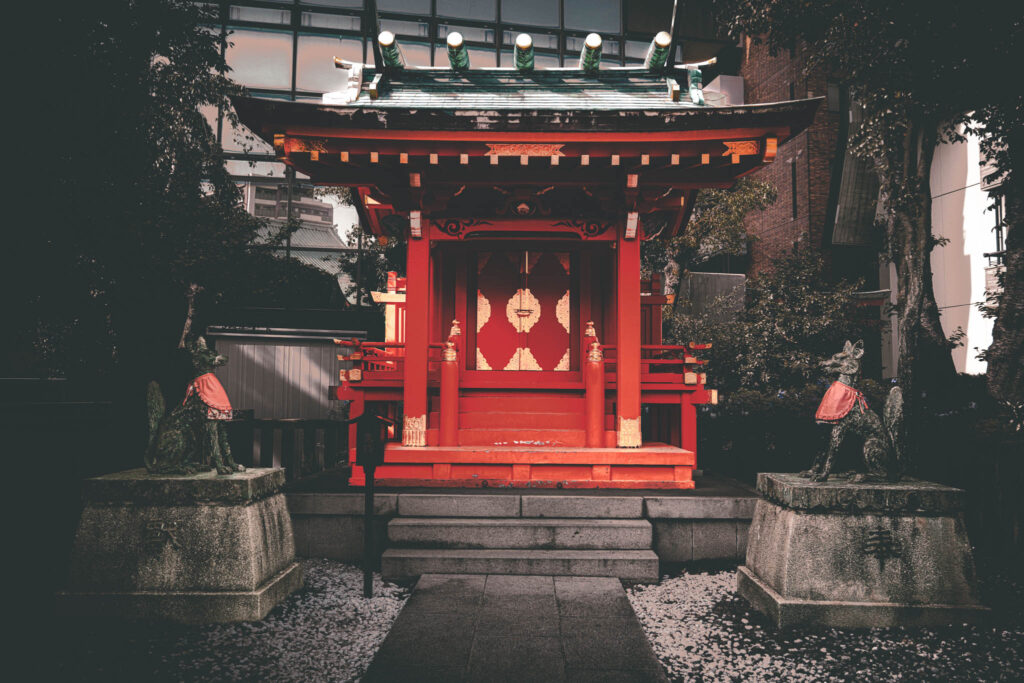
I often find Shinto shrines to be slightly intimidating, which is odd because I don’t necessarily subscribe to the notion that the kami are actually dwelling in them. Nevertheless, on approaching a shrine I somehow generally feel like I am intruding and potentially interrupting the tutelary entities’ inscrutable activities. Shrines are also often tiny and easy to miss. I largely missed this one, snapping only a couple of photos on my phone in passing. Suehiro sits at one of the back entrances to the infinitely better-known Kanda Myoujin complex, which was my goal for the late afternoon.
However, after reviewing my recorded images tonight in my hotel room, I find myself wishing that I had spent more time on this toylike little inarijinja with its inevitable guardian foxes. A quick web search only reveals that it is older than 1616, although one translated review on Google Maps noted that the current structure was rebuilt February 28, 1966 by earnest believers from the “Tokyo Dried Bonito Wholesalers Association”.
The deity worshipped is Uka no Mitama no Kami, and the festival is held on the day of the horse in March.
Uka no Mitama is in Classical Japanese Mythology the kami (or more likely, megami or female kami) of food and is usually identified with the ubiquitous, gender-fluid and not-very-Classical kami Inari — obviously more divinity than dryad, as such beings go — who brought rice to Japan. Who is the dedicatee of at least a third of existent Shinto shrines. And who is also: a beautiful young woman; an old man carrying grains of rice; a dragon; a giant spider; probably-originally-maybe a fox that kept rodents from despoiling the people’s harvest; Benzaiten, one of the Seven Gods of Fortune; a Buddhist dakini or fairy sky dancer; a nemesis of the wicked with a fearsome whip that burnt crops; and the patron of fertility, rice, tea, sake, agriculture, industry, general prosperity, worldly success, brothels, entertainers, swords and swordsmiths. As well as dried bonito wholesalers, it seems. So definitely a Someone more deserving of my attention than a few snapshots.
I’ll have to try to come back, some time. But sadly, I am not in Tokyo for long, and as the song goes, We may never pass this way again.
I ran one of the photographs through a pixel glitching app (I think of this as akin to a Surrealist exercise in automatism) and for whatever reason the deconstructed results were for once nearly as striking as the original.
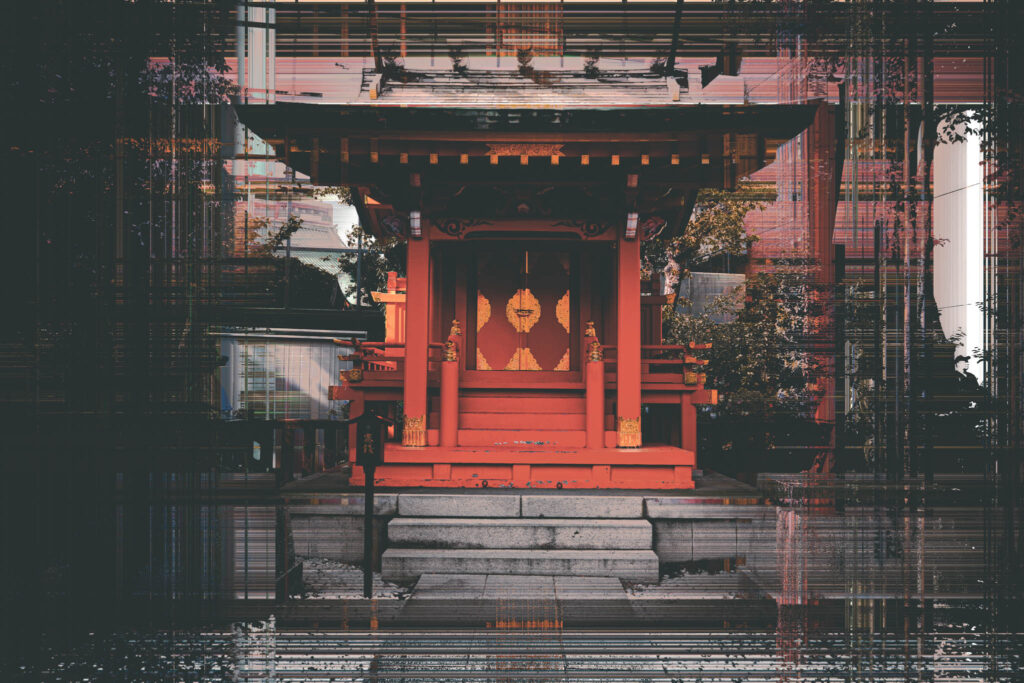
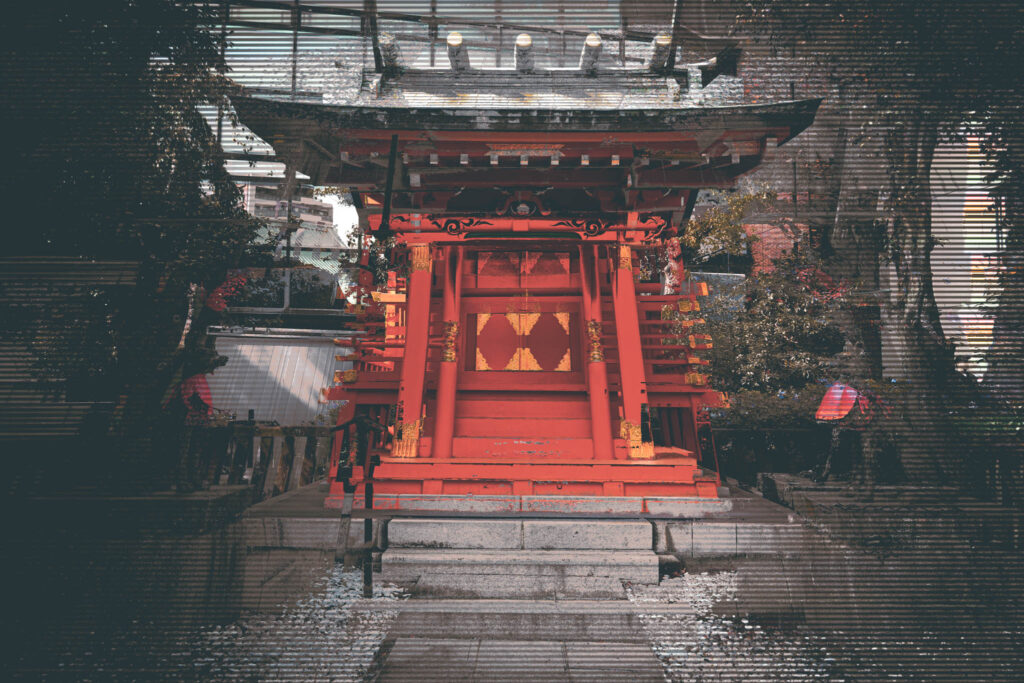
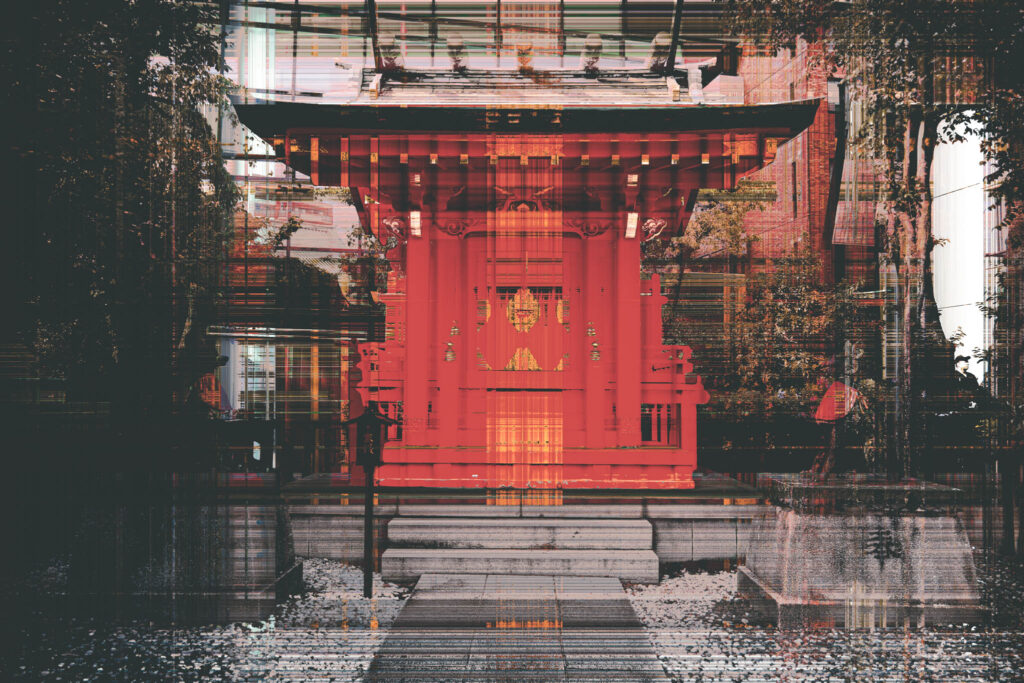

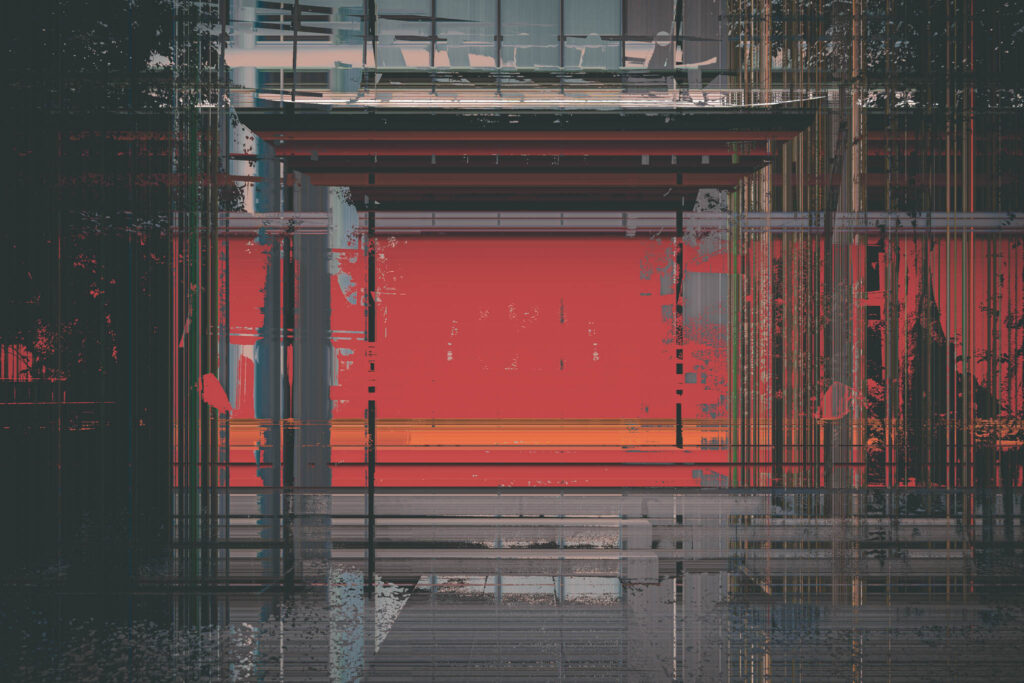
Leave a Reply